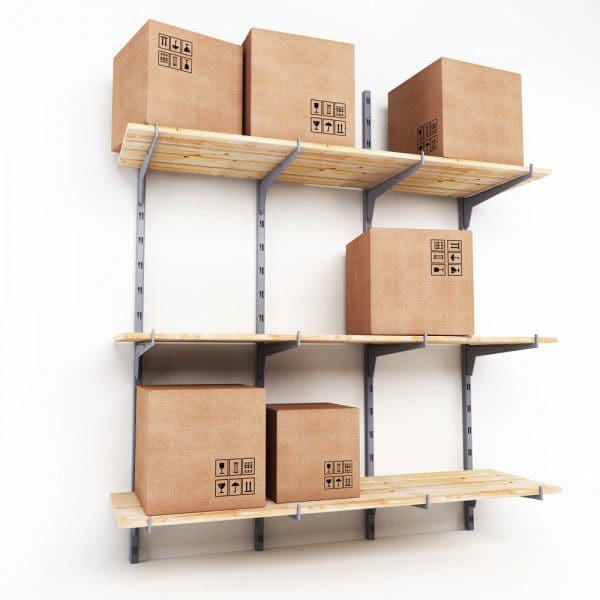Buying supply chain management software can often be a nightmarish process for any CIO or IT department. Each step seems protracted offering little certainty. The eventual software winner is crucial for operations and needs to be viable for now and long into the future but IT budgets are limited. How can you quickly find a solution that delivers on all your needs, but doesn’t demand extreme capital investment? Will it enhance your supply chain, reduce resource usage and improve customer relationships?
The process seems deceptively simple. Map out the requirements and features you need, shortlist your vendor options, and make a decision based on your research and promises made by vendors. Sounds easy, right?
Unfortunately, it is rarely that straightforward. Many of our clients tell us they have up to 2 years and beyond in this process wading through options they aren’t convinced by. That isn’t to say vendors are not trustworthy, but a sales pitch tells you what you want to hear. Then you turn to a market comparison platform but often they too have bias, charging vendors to appear.
Olive cuts through the BS and does not charge vendors for promotion. We streamline the process based on your exact needs and in many cases we are reducing buying time by up to 80%.
Supply Chain Management Software Purchasing Risks
There are so many pitfalls en route from the drawn-out process.
Financial risk is a major headache for CIOs and IT procurement officers in today’s market. Constraints demand higher value for money and the multiplier of making an error means that the wrong decision is compounded financially throughout the future.
Operations and efficiency are equally important. If the software doesn’t improve matters, will the team reject it? What are you buying for if not to improve your process? 48% of businesses are concerned the new software will cause major disruption to operations.
Career risk is also a very real concern for those in charge. How will your career be impacted by the decision? The buying process can be a nightmare for some and cutting corners is most appealing. Unfortunately, this is often where CIOs run into trouble.
The domino effect of software purchasing makes the decision vital. Olive looks at the market on your behalf understanding the personal and professional risks. We propose options based on what you need in record time saving you from any headaches in the process.
How to Choose the Right Enterprise Supply Chain Management (SCM) Solution in 5 steps
One of the more undervalued parts of the buying process from the supplier side is appreciating the uniqueness of each business. When you’re a hammer, everything tends to look like a nail, meaning that many vendors will pitch you whether it is the right tool for the job or not.
The buying process, while taxing, ensures that you look objectively at all options, and facilitate necessary stakeholder’s needs. We’ve pared it back to it’s essential steps.
1. Identify the specific area in need of improvement
Different companies prioritize different elements of the chain and your challenges could come from inventory, warehouse, logistics, or returns management. They could be in processing orders, unique customer demands or forecasting and planning ahead. Not every company needs to focus all efforts on the same link in the chain.
Whether you are aiming to consolidate and automate processes reducing time, costs and improve profits or output, YOUR solution should be compatible with YOUR defined need.
– What do you ultimately need this software for?
– What does it need to be able to do?
– What is the number 1 thing you need the software to alleviate? Rank your priorities.
– What are your non-negotiables?
– What would be nice but isn’t a deal-breaker?
2. Survey the Market Options
Once you have the criterion, you are most of the way there. Agreeing a budget for initial outlay and maintenance will help filter the list of options you return. Apply a value to your software and the ROI you are expecting.
Keep in mind that the cheapest option tends to be the one you pay for. You don’t want to be buying again a year later, or buying shelfware.
When you have established your financial filters, you can begin to generate a list of viable options. Internet searches, market comparison platforms, industry, and competitor choices are great resources to begin with. With the age of transparency, reviews are now live on the internet and can help whittle your selections down. Keep in mind, these reviews should be taken with a pinch of salt. A similar company to yours – or even a competitor could leave a review that may influence your choice. Remember these reviews are based on that customer’s unique experience, and that company’s needs may be vastly different to your company’s needs.
Do bear in mind that many market comparison platforms exist behind a paywall and often have a vested interest in promoting paying vendors. Remember, your business is not a nail in this situation and should look for the right tool and unbiased option.
3. Shortlisting and Evaluating Options
By now you will have gathered a range of options. Equipped with your budget, non-negotiables and priorities you can eliminate choices based on these filters.
– Affordability – Do they fit your budget?
– Requirements – Do they satisfy your needs?
– Compatibility – Can you use this option with other software you have? Do they already work in your industry?
– Agility – Will innovation make this software obsolete?
– Visibility – Can you tell if it is working?
– Customer service – Do they continue to assist after implementation to avoid disruption? Are they responsive?
4. Choosing between alternatives
With any luck by this stage you are left with 3-5 of the best options that actively solve your problems. Choosing your supply chain software is a lot like driving a car, you really shouldn’t buy it until you take it for a test drive.
Ask your potential vendor for a demo or trial. A vendor that agrees is confident in their solution and shows care for your concern. When trialing a software, bring another member of the team and try to wear all hats. Sure this works for the warehouse but perhaps it complicates the ordering process?
Dig into each vendor’s history of reviews but remain skeptical. Reviews are open to abuse positively and negatively. Perhaps your vendor can offer references provided they are not competitors or locked into non-disclosure agreements. Be cautious with vendor provided references as often they are cherry picked. Dig into the answers.
At all times, the solution should be aligned to your needs. A new car can do 0-100 all it wants but if you can’t pack weekly groceries, golf bags or suitcases, does it matter? Your needs are what you are trying to meet. However, it is worth keeping an open mind and learning of ancillary benefits that could alleviate other problems.
5. Selection
With a successful demo, you and the team should discuss where each vendor thrives while also highlighting concerns.
– Did the vendor discuss your specific requirements or highlight their favourite features?
– Who excelled most in your priority categories?
– Who followed up afterwards to see if it was a fit?
– Who was selling to you and who was helping you?
– What is the after purchase care plan?
– Does it help your team and process
– Ultimately, does it make your process better?
The Supply Chain Software Buying Process can be long, but Important
Our customers have dreaded the procurement of supply chain software. In-house it might take time to hone in on your exact requirements but when you go out into the market to find a suitable provider, it gets nightmarish.
Many vendors or market comparisons get commission for selling different providers. We find this structure hampers credibility just as a doctor prescribing a medicine without listening to your ailments. We don’t charge vendors to feature as our options meaning they do not influence our suggestions. Olive uses your needs as the guidance as that is what you deserve when making this investment.
“The culture of bias in sales and Chris Heard’s (CEO and founder of Olive) ability to influence decision criteria, was the catalyst for the conception of Olive.”
Olive generates a hassle free selection of refined options appropriate for the stakeholders involved. We help you to eliminate the vendors who don’t satisfy your needs to dramatically reduce procurement delays and risks. We afford you the opportunity to anonymously review each solution in accordance with what paves the way for success.
Olive Streamlines the Process for You
There is no escaping that purchasing supply chain management software is filled with potential headaches and risks. Olive appreciates the career risks and opportunities to making a selection that integrates seamlessly and improves the lives of your team and customers. We are motivated solely by providing the correct vendor to serve you in a time-efficient, pain-free manner.
With Olive, the buyer is in control of the project. Equipped with our streamlined, efficient buying process driven by your needs; your company is better positioned to enhance profits and innovate faster. At Olive, facts come first and rationale is what makes us valuable. Our decisions are fuelled by what offers our clients the best solution!




